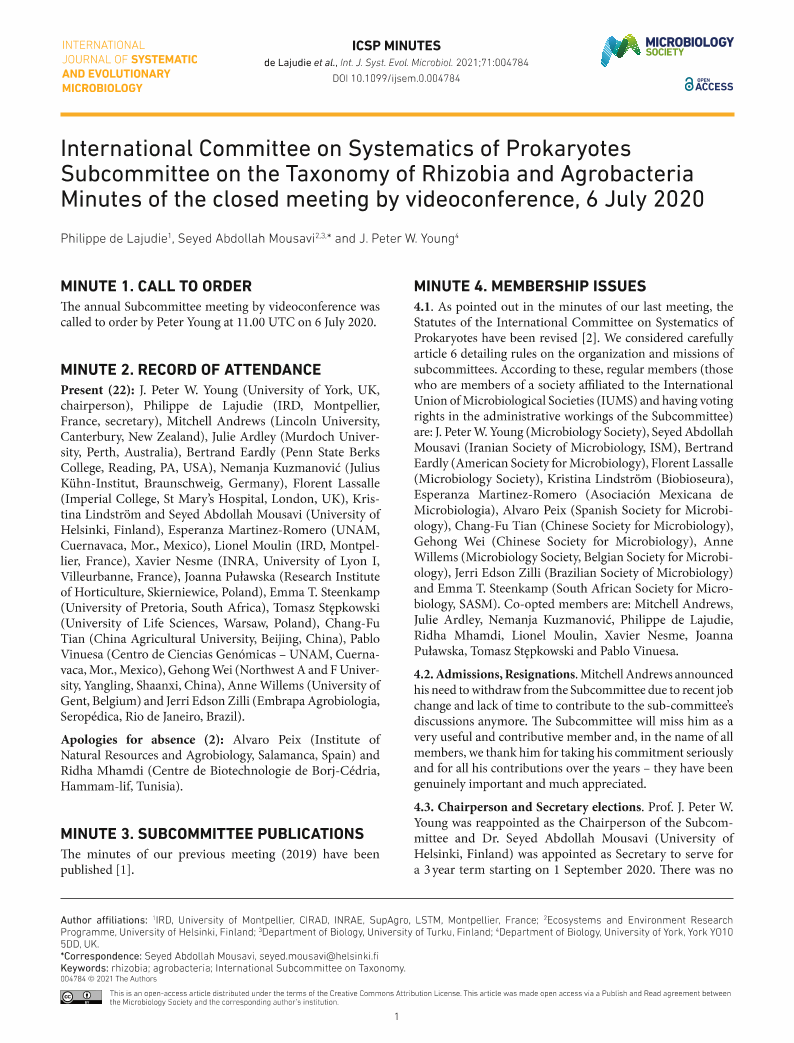
Full text loading...
 , Seyed Abdollah Mousavi2,3
, Seyed Abdollah Mousavi2,3 and J. Peter W. Young4
and J. Peter W. Young4

International Committee on Systematics of Prokaryotes Subcommittee on the Taxonomy of Rhizobia and Agrobacteria Minutes of the closed meeting by videoconference, 6 July 2020, Page 1 of 1
< Previous page | Next page > /docserver/preview/fulltext/ijsem/71/5/ijsem004784-1.gif
There is no abstract available.

Article metrics loading...

Full text loading...
References


Data & Media loading...
